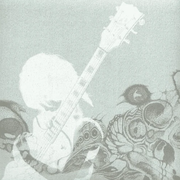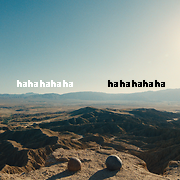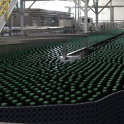|
Kaiho posted:Argh. It really depends. There are professional recipes out there that call for 14 days of dry hopping. U.S. Barryl posted:I use bottled spring water for all my brews, and yet they have all come out tasting a bit chemically. I just realized that I've been diluting my priming solution with plain tap water. Usually about 2 pints or so for 5oz of corn sugar. Our water is certainly treated with chloramines. Would that be enough for me to notice this weird flavor? I bottled a pumpkin spiced ale about a week ago, which I was sure would be the best I have made since I used temp control for it. It still has this off flavor though. The sample tasted good before bottling, so I'm guessing the small amount of tap water at bottling time is doing something. This trial and error process is driving me nuts. I'm wasting tons of money on ingredients and I have 15 gallons of beer that tastes like rear end. Angry Grimace fucked around with this message at 18:02 on Aug 3, 2012 |
|
|
|

|
| # ? Apr 25, 2024 21:26 |
|
U.S. Barryl posted:I use bottled spring water for all my brews, and yet they have all come out tasting a bit chemically. I just realized that I've been diluting my priming solution with plain tap water. Usually about 2 pints or so for 5oz of corn sugar. Our water is certainly treated with chloramines. Would that be enough for me to notice this weird flavor? I bottled a pumpkin spiced ale about a week ago, which I was sure would be the best I have made since I used temp control for it. It still has this off flavor though. The sample tasted good before bottling, so I'm guessing the small amount of tap water at bottling time is doing something. This trial and error process is driving me nuts. I'm wasting tons of money on ingredients and I have 15 gallons of beer that tastes like rear end. How are you cleaning your bottles?
|
|
|
|
For what it's worth, I kept getting what I considered a "weird flavor" that I couldn't really pin down in my brews until I started double pitching yeast/creating starters. The first batch I used an actual starter instead of a single vial of yeast, was a night and day difference.
|
|
|
|
Imasalmon posted:How are you cleaning your bottles? I rinse all my bottles immediately after pouring, and air dry. On bottling day, I sink them in a bucket of star-san, fill and cap.
|
|
|
|
Pitching a starter of wyeast 029 tonight (first time with a starter). Should I temperature control that like I would with the fermentation or let it go nuts at ambient (80ish)? edit: unintentional quote Paladine_PSoT fucked around with this message at 19:56 on Aug 3, 2012 |
|
|
|
U.S. Barryl posted:I use bottled spring water for all my brews, and yet they have all come out tasting a bit chemically. I just realized that I've been diluting my priming solution with plain tap water. Usually about 2 pints or so for 5oz of corn sugar. Our water is certainly treated with chloramines. Would that be enough for me to notice this weird flavor? I bottled a pumpkin spiced ale about a week ago, which I was sure would be the best I have made since I used temp control for it. It still has this off flavor though. The sample tasted good before bottling, so I'm guessing the small amount of tap water at bottling time is doing something. This trial and error process is driving me nuts. I'm wasting tons of money on ingredients and I have 15 gallons of beer that tastes like rear end. As already stated it's highly unlikely such a small amount of tap water would do that, but it also sounds like it's an easy enough variable to eliminate. I just remembered I missed two troubleshooting points: 7) Are you aerating properly prior to pitching? Once you're at pitching temps you really do have to sit there and shake it for 5 minutes 8) Are you pitching enough yeast? This goes hand in hand with point 7, if you are underpitching then you definitely want to aerate thoroughly. Try double-pitching with two packets of dry yeast, if you are still having weird tastes then it's definitely not due to underpitching as two packets of dry yeast is a poo poo ton. You can also make a starter to conserve money, but let's not introduce MORE variables just yet, we're trying to narrow them down here.
|
|
|
|
Ok, I brew again on Sunday. A coffee stout. I'm going to use only bottled spring water. After I cool the wort I'm going to aerate the poo poo out of it, and pitch two packets of s-04. I'm going to use the large water tub and ice bottle method to keep temps below 68F. I'm not going to leave the beer in the fermenter for more than two weeks. I'm going to prime with bottled water and corn sugar, and make sure that my bottles are super clean. Is it absolutely necessary to keep the fermenter at 68F the entire time or just during the first 5 or 6 days of fermentation? My last batch I let warm up to room temp after obvious fermentation ended, since I was tired of changing out ice bottles all the time, and I wasn't quite ready to bottle yet. It sat at room temp (72-74F) for about 9 days. This time I'm going to be diligent, and keep it below 68F until bottling. Do I need to temp control the bottles as well?
|
|
|
|
Paladine_PSoT posted:Pitching a starter of wyeast 029 tonight (first time with a starter). Should I temperature control that like I would with the fermentation or let it go nuts at ambient (80ish)? Not sure if you meant White Labs 029 but no don't let it ferment ambient. NB.com says temp range for that yeast is 65-69*
|
|
|
|
U.S. Barryl posted:Ok, I brew again on Sunday. A coffee stout. I'm going to use only bottled spring water. After I cool the wort I'm going to aerate the poo poo out of it, and pitch two packets of s-04. I'm going to use the large water tub and ice bottle method to keep temps below 68F. I'm not going to leave the beer in the fermenter for more than two weeks. I'm going to prime with bottled water and corn sugar, and make sure that my bottles are super clean. Looks good except for this point. I like to give the yeast plenty of time to clean up fermentation byproducts, usually 3-4 weeks. As far as temperature control, it's only really important for the first 5-7 days of fermentation. Once the yeast has fermented out you can let it rise a bit without getting off flavors.
|
|
|
|
U.S. Barryl posted:Ok, I brew again on Sunday. A coffee stout. I'm going to use only bottled spring water. After I cool the wort I'm going to aerate the poo poo out of it, and pitch two packets of s-04. I'm going to use the large water tub and ice bottle method to keep temps below 68F. I'm not going to leave the beer in the fermenter for more than two weeks. I'm going to prime with bottled water and corn sugar, and make sure that my bottles are super clean. What temperature are you sparging at? Other than that, don't rush the beer too much, in the primary, and in bottles. How are the older beers tasting these days as compared to before? You might try taking a bottle or two to your local homebrew store and ask them to try it to help you identify the problem.
|
|
|
|
Paladine_PSoT posted:Pitching a starter of wyeast 029 tonight (first time with a starter). Should I temperature control that like I would with the fermentation or let it go nuts at ambient (80ish)? I personally let all my ale yeast starters just go at ambient and I've never noticed any off flavors
|
|
|
|
lazerwolf posted:Not sure if you meant White Labs 029 but no don't let it ferment ambient. NB.com says temp range for that yeast is 65-69* er.. yes. White labs 029 German Kolsch. I'm not going to ferment at ambient, I just wanted to know if the starter should be ambient or in the 65-69 range
|
|
|
|
Paladine_PSoT posted:er.. yes. White labs 029 German Kolsch. I'm not going to ferment at ambient, I just wanted to know if the starter should be ambient or in the 65-69 range RiggenBlaque posted:I personally let all my ale yeast starters just go at ambient and I've never noticed any off flavors internet celebrity posted:Looks good except for this point. I like to give the yeast plenty of time to clean up fermentation byproducts, usually 3-4 weeks. Angry Grimace fucked around with this message at 22:41 on Aug 3, 2012 |
|
|
|
Angry Grimace posted:
That would be the way to do it. I don't know much about lager yeast starters, but my inclination is that you should keep them at proper fermentation temperatures. Since lagers have so little to hide behind, you want to take all steps possible to avoid off-flavors
|
|
|
|
No need to do lager starters at lager temperatures, ambient room temperature is fine. Which reminds me, the book Yeast by Chris White of White Labs is a great reference for all the weird little quirks of yeast and fermentation.
|
|
|
|
internet celebrity posted:No need to do lager starters at lager temperatures, ambient room temperature is fine. I've heard of weird advice like "if the starter yeast gets used to making diacetyl, it will make more!" which sounds suspiciously like bullshit. I might get Chris's book before I start trying lagers. I could always just ask Chris himself since White Labs main facility and tasting room is like four blocks from my house, but that might be awkward.
|
|
|
|
Jacobey000 posted:Yeah, but that much isn't just going to be out of style its going to be pretty dang sweet because of the unfermentable sugars. zedprime posted:Dry kilned base malts don't do much to fermentability as near as I've been a let to tell. The loss of diastatic power further indicates to me the color from munich etc. is on the proteiny side of things. I dunno, I've known Vienna malt to have a pretty high diastatic power. Typically it's above 100* Litner, where pilsner/2-row will be anywhere from 110-160*. I believe 35* is the base for self-conversion. I don't think there'd be many unfermentable sugars even with say 30% adjuncts. I did an all-Vienna lager and got nearly 80% attenuation with Munich Lager yeast which under 75% typical attenuation.
|
|
|
|
indigi posted:I dunno, I've known Vienna malt to have a pretty high diastatic power. Typically it's above 100* Litner, where pilsner/2-row will be anywhere from 110-160*. I believe 35* is the base for self-conversion. I don't think there'd be many unfermentable sugars even with say 30% adjuncts. I did an all-Vienna lager and got nearly 80% attenuation with Munich Lager yeast which under 75% typical attenuation.
|
|
|
|
It's over 12 hours later and the starter for the Oktoberfest I'm planning on brewing tomorrow has no real signs of life. I pitched it into the starter wort when it was around 56 degrees F and have been keeping it at my planned fermentation temp of about 52 F. Is this normal? All the starters I've made previously have shown signs of life in only a couple hours.
|
|
|
|
Zakath posted:It's over 12 hours later and the starter for the Oktoberfest I'm planning on brewing tomorrow has no real signs of life. I pitched it into the starter wort when it was around 56 degrees F and have been keeping it at my planned fermentation temp of about 52 F. Is this normal? All the starters I've made previously have shown signs of life in only a couple hours. I usually do my starters like 48 hours in advance. I'm not sure 12 hours is enough time, particularly not for a lager where you're going to need a ton of yeast.
|
|
|
|
I decided to say gently caress it and get a fridge to ferment in. My sister in-law just happened to be getting rid of one, so I called dibs on it. I'm nearly positive my issues are with temp control since my house doesn't get under 72 ever, and the tub with ice bottles method was very inaccurate. What's the cheapest temp controller for a fridge out there? I'm not very good with wiring and stuff, but I do have a soldering iron and am willing to do a bit of DIY if it isn't TOO complicated.
|
|
|
|
U.S. Barryl posted:I decided to say gently caress it and get a fridge to ferment in. My sister in-law just happened to be getting rid of one, so I called dibs on it. I'm nearly positive my issues are with temp control since my house doesn't get under 72 ever, and the tub with ice bottles method was very inaccurate. What's the cheapest temp controller for a fridge out there? I'm not very good with wiring and stuff, but I do have a soldering iron and am willing to do a bit of DIY if it isn't TOO complicated. You can just buy one that doesn't require wiring modifications for around $50 from Johnson. Given you're trying to eliminate variables, do you want your wiring skills to be added to the list of "things I may or may not have done wrong"?
|
|
|
|
For all the starter talk it's best to do your starter at room temp, then put it in the fridge for 24-48 hours to drop out all the yeast. Decant the liquid and pitch only the good slurry. This goes for lagers as well. Yeast grows better at temps of 70-80* but most strains don't create desirable flavors at those temps. So if you toss the lovely tasting starter liquid you are left with just the good yeast cells which grew quickly.
|
|
|
|
U.S. Barryl posted:I decided to say gently caress it and get a fridge to ferment in. My sister in-law just happened to be getting rid of one, so I called dibs on it. I'm nearly positive my issues are with temp control since my house doesn't get under 72 ever, and the tub with ice bottles method was very inaccurate. What's the cheapest temp controller for a fridge out there? I'm not very good with wiring and stuff, but I do have a soldering iron and am willing to do a bit of DIY if it isn't TOO complicated. I got the unwired Ranco etc 11000. Wiring was incredibly easy and just required a screw drive, an extension cord, and something to cut/strip wire. It's like a child's electronic lab kit. Edit: I do have to say I only saved $25 minus the cost of an outdoor extension cord (~$10). So you don't save much but it was fun and easy to assemble. Plus I ended getting a nice digital TC for the price of the crappy analog Johnson controller. tesilential fucked around with this message at 17:42 on Aug 4, 2012 |
|
|
|
I use the old-fashioned Johnson analog controller on my ferment fridge with zero issues. The bulb runs into the fridge and the unit itself hangs on the side. The silver wire between the box and the bulb is actually a tube, so be careful not to crimp it. Run the tube in the door and hold it in place with some packing tape or something. Then plug the box into the wall and the fridge into the other end of the plug (you'll see what I mean). Set the dial for the ambient temp you want and you're done. Here's the one I use, although I did not buy it from these guys and you may be able to get it more cheaply elsewhere: http://morebeer.com/view_product/16663//Analog_Temperature_Controller
|
|
|
|
tesilential posted:I got the unwired Ranco etc 11000. Wiring was incredibly easy and just required a screw drive, an extension cord, and something to cut/strip wire. Feel free to ask me any questions via PM or this thread.
|
|
|
|
Angry Grimace posted:It really depends. There are professional recipes out there that call for 14 days of dry hopping. Tasted it a bit this morning when I finally got round to bottling it. It's bitter as hell, grapefruity on the nose and a beautiful copper color. 7.4% ABV too which is 0.1 away from what I wanted. Obviously still green so will have to see how the hop flavor develops. Doesn't seem to have gone too grassy. I went to a home brew club they've started running here in London and gave a taster of my Simcoe/Amarillo pale to a brewer from The Kernel and it was incredible how much more useful comments a professional can give you. While I love my friends and love the fact that a lot of them go "man that's really nice can I have another?" when a professional takes one sniff and says "yeah you have a bit of yeast on the nose there but that's not a surprise since you carried it all the way here" and on tasting mentions a tiny bit of astringency I hadn't even noticed before, it's on another level. That experience and helping out at another local brewery for a day made me want to jump to all-grain ASAP though. I'll finish my dissertation in a month after which I think I'll save up for a mash tun and a bigger pot.
|
|
|
|
Well, I just got done assembling my first mead must, basically following MoreBeer's mead whitepaper. A local apiary had sage honey which tasted good, so I decided to use 15 pounds of that in 5 gallons of must. The sealed-fermenter-stirrinator works brilliantly, and I am thinking I probably will not have to open the fermenter at all except to add some nutrients. Thanks to all who made good suggestions when I was feeling it all out.
|
|
|
|
Jo3sh posted:Thanks to all who made good suggestions when I was feeling it all out. What yeast did you use? Are you going to add any spices or fruit later on? I'm still gathering equipment for the mead yeast trial but I just finished a recipe for cherry melomel that I'm making tomorrow. SG 1.110 with Lalvin 71B-1122, then racked onto 8 pounds of frozen pitted tart cherries.
|
|
|
|
Cpt.Wacky posted:What yeast did you use? Are you going to add any spices or fruit later on? I used Lalvin D-47. This one, I am going to keep simple - just honey, water, and yeast. Jo3sh fucked around with this message at 06:46 on Aug 5, 2012 |
|
|
|
WOOO, my brewing pal just brought over the fruit of his first hop harvest. This was from 6 rhizomes of Cascade - he was going to wait another couple weeks to harvest but the suckers got so heavy the trelise broke. He also has 6 rhizomes of Columbus yet to be harvested, so excited to start brewing with these. Also these baggies full of green certainly look like contraband at a glance E: Sorry about the tables, not sure how to edit an attachment
|
|
|
|
Not surprising since they are both part of the family Cannabaceae. I can't wait to get a house so I can start growing hops. Piles of awesome hops and a cool plant that grows super fast.
|
|
|
|
6 days into the fermentation process now and I just checked up on the fermenter. I'm using the Brewer's Best Red Ale kit. I wanted to check up on it as I wasn't seeing any CO2 activity coming from the airlock since the second day when I dropped the temperature from 79 to 70-72 (I know that's still warm). When I opened the fermenter up, there wasn't much activity going on inside. It had a starting gravity of 1.048 on brew day. I did a reading and got 1.008. The kit says the FG should be between 1.011-1.015. Should the hydrometer be reading 1.008? Shouldn't there be more activity only 6 days into the fermentation? Is it done/near done? I'm going to do another reading tomorrow to see if there's much change, but I'm not sure what to make of it.
|
|
|
|
The bulk of fermentation very often finishes within 48 hours of pitching the yeast. It's not uncommon for it to finish within 24 hours. There's no reason to doubt your hydrometer in this case. There may still be activity going on but the sugar -> alcohol process is pretty much done.
|
|
|
|
It's done. 1.008 is not out of the realm of normal variation, especially given your warm ferment. Most ferments are really only active for 3-4 days, so you're really right on schedule. Button it up again and let it rest to settle and clean itself up, and package it anytime from a few days to a couple of weeks from now.
|
|
|
|
To repeat what's been said before a bit, I've never had a ferment that was particularly active more than 3 days or so. I suppose if it was a lager or a really big beer or something, but it sounds like a pretty standard ale.
|
|
|
|
Alright guys, I'll do one more reading tomorrow then I'll be bottling sometime in the next week. Where do most of you guys get your bottles, by the way?
|
|
|
|
I reuse commercial bottles (I and my friends drink a lot it seems). Then again we don't have those awful screw cap things here in Europe.
|
|
|
|
The majority of decent beers here aren't screw-top, usually just the real cheap stuff. Oh, and Bass Ale makes normal-appearing pop-tops but they're slightly too big for a standard cap, which makes me so mad every time one accidentally sneaks into my empty stock. We popped the first bottle of Northern Brewer's Farmhouse Biere de Table yesterday and... some fusel alcohols, I think (didn't bother me but gave the wife a solid headache), even though I kept it on the middle-low side of the recommended range.  Gonna get myself outside of a pair of them tonight to see if it bothers me (or if it was coincidence for her), but I'm worried. Any possibility this will clean up in the bottle over the next couple weeks? Splizwarf fucked around with this message at 16:25 on Aug 6, 2012 |
|
|
|

|
| # ? Apr 25, 2024 21:26 |
|
Edit: to poster above me, Exactly what temp did you pitch and ferment? French saison can tolerate a bit higher temps than regular American/British ale yeasts, but not as much as Belgian saison and Trappist yeasts. If you kept the actual temp around 76*, maybe 78* for the first couple it should be okay. Keep in mind even for high fermenting yeasts you should pitch around 66* and then allowed to rise to the target temp over the first couple of days. Bondii posted:Alright guys, I'll do one more reading tomorrow then I'll be bottling sometime in the next week. Where do most of you guys get your bottles, by the way? For the 4 months I was able to tolerate bottling, I basically used Kona Longboard and Sam Adams bottles as both are just a couple bucks more per 12 pack than new empties would cost. tesilential fucked around with this message at 17:13 on Aug 6, 2012 |
|
|























